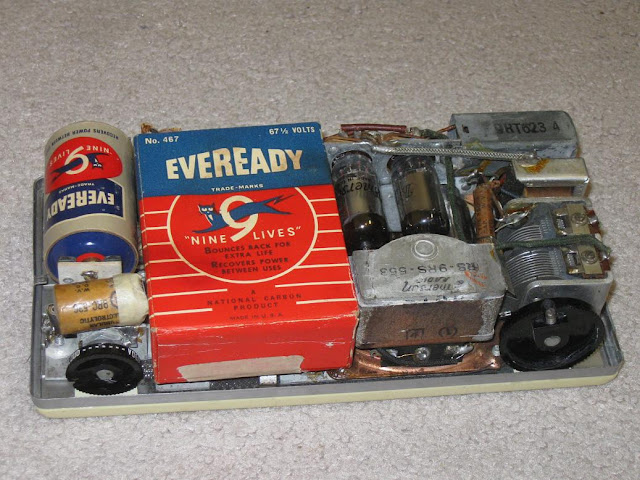Today we have smart phones,
tablets, MP3 players, and lots of other portable electronic devices too
numerous to name. A few years ago we
also had pagers, personal data assistants, portable CD players and others. It would seem that all these portable marvels
must have originated with the ubiquitous transistor radio of the 1950s. But, that’s not exactly correct. It really started much earlier. As far back as the early 1920s some
speculators suggested that a portable radio might be possible. It was
possible and happened quickly. In 1924
Zenith introduced the first fully contained (radio, batteries, antenna, and
speaker) portable radio. It was suitcase
sized, but it was portable. In 1925 the
Radio Corporation of America (RCA) offered their portable model 24 Radiola and Westinghouse
and others followed with similar self contained portable radios. Thes portable frenzy did not last long.
All of the first generation
portables were expensive compared to their non-portable brethren. They also were heavy. Battery
consumption was high and they were very bulky, too bulky to carry and
play. Some improvements came with time,
but public interest waned. Slowly but
surely the number of portable radios sold dropped year by year. So, that by 1937 not a single major radio
manufacturer offered a battery operated portable radio.
There was still a market for
portable radios. But, it was apparent
that the radio buying public wanted improvements in battery life, weight, and reliability. That didn’t happen until 1938. That year Sylvania introduced a new line of low power
tubes. Less costly batteries also became
available. The result was a portable
radio renaissance. By late 1939 just
about every significant radio manufacturer was offering a portable radio. But they were still big. Most were still the size of a small
suitcase. To offer something more
compact required further reduction in the size of tubes, batteries and other
radio parts. Fortunately that didn’t
take long.
In 1939 RCA introduced a line of
miniature tubes and compact batteries to power them. This led to the small personal portable
radios available prior to WWII. RCA’s
model BP-10 set the standard. Others
copied the idea. The figure below shows
an RCA BP-10 with several prewar personal sets from other manufactures. Although popular at the time, they were
still not very good on battery life, size and reliability. Until the invention of the transistor they
were about as small and portable as a radio could get. Unfortunately, WWII stopped the production of
all radios for civilian use. The three
year war hiatus cooled the public interest in personal sets. After the war RCA, Emerson, and a few others
tried to market battery portables, but they didn’t sell well unless they could also
operate from house current.
In 1954 a small company called
Regency offered a transistor radio just in time for the Christmas sales
season. Although it was not a great
radio it sold well and sparked a revival of public interest in radios that
could be played while carried, i.e. personal portables. As they say, the rest is history. After transistor radios there were portable
tape players, pagers, calculators, leading to all the modern portable devices
we now can’t do without.















